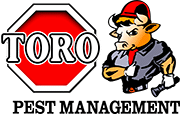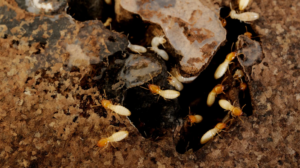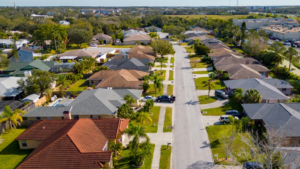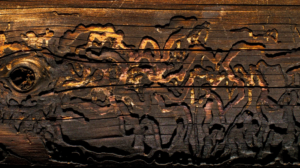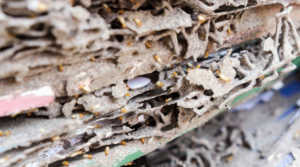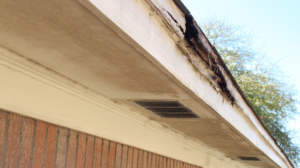South Florida residents are no strangers to termites, but many are unaware of how quickly the Asian subterranean termite (Coptotermes gestroi) can move through an entire neighborhood. Unlike native species that often remain contained to a single structure for extended periods, this invasive termite is capable of spreading colony to colony, house to house, with alarming speed and efficiency.
The warm, humid climate of South Florida creates an ideal breeding ground for these termites, and once they establish a foothold in one property, nearby homes are immediately at risk. Understanding how these termites spread is key to protecting not just individual homes, but entire communities—especially those managed by HOAs or located in densely populated areas.
Underground Networks That Connect Multiple Properties
Asian subterranean termites live in colonies underground and build extensive tunnel systems that can stretch up to 300 feet in length. These tunnels allow the termites to move from one food source (wood) to another without ever being exposed to light or air.
That means if a single house is infested, the termites can quietly tunnel beneath yards, sidewalks, driveways, and fences to reach adjacent properties—often without any visible signs.
This behavior is especially dangerous in:
Townhome and condo communities with shared foundations
HOA neighborhoods where homes are closely spaced
Urban residential blocks with little distance between structures
Once inside a new property, they can establish secondary satellite colonies, allowing the infestation to grow rapidly across multiple homes.
Swarming: The Airborne Invasion
In addition to their underground networks, Asian subterranean termites also spread through swarming. During swarming season (usually in spring or early summer), reproductive termites—also called alates—leave the colony in large numbers to mate and start new colonies.
Each swarm can include tens of thousands of flying termites, and if they find suitable wood and moisture nearby, they will establish brand-new colonies within the same neighborhood.
This airborne expansion means that even if your home is not directly connected to an infested structure, you’re still at risk from swarms landing in attics, garages, or tree canopies.
Landscaping: A Hidden Pathway for Termite Spread
Many South Florida properties share certain landscaping features that, while beautiful, unfortunately contribute to termite spread. These include:
Mulch beds near exterior walls
Wooden fences or trellises that connect multiple properties
Shared irrigation systems or areas with standing water
Asian subterranean termites are attracted to moisture and wood, and these features help them move between properties without detection. Even trees or stumps in shared green areas can serve as a launchpad for an infestation.
Why One Homeowner’s Problem Becomes Everyone’s Problem
When one home in a neighborhood becomes infested, nearby properties often assume they’re unaffected—until it’s too late. By the time signs like mud tubes, hollow wood, or swarmers appear, the termites have usually been active for months or even years.
For HOA communities and multi-unit properties, this can become a major financial and legal issue. If the HOA delays action or fails to treat common areas, the termites continue to spread—causing damage across multiple units and sparking resident complaints, lawsuits, and declining property values.
How TORO Pest Stops the Spread
At TORO Pest, we specialize in neighborhood-wide termite control. Our goal is not just to treat individual homes, but to stop termite colonies from spreading across entire communities.
Our services include:
✅ Free termite inspections for individual properties and HOA common areas
✅ Colony elimination using professional bait systems and termiticides
✅ Barrier treatments that protect entire lots, not just one home
✅ Swarm season monitoring to detect and eliminate reproductive termites
✅ Education for homeowners and boards on how to minimize spread risk
We work directly with homeowners, property managers, and HOA boards to create custom termite prevention plans that protect everyone—not just one structure at a time.
Schedule a Free Neighborhood Inspection Today
If your neighbor has termites, your home is already at risk. Don’t wait for the damage to reach your doorstep.
Call TORO Pest today for a free inspection and let us stop Asian subterranean termites before they take over your entire neighborhood.
